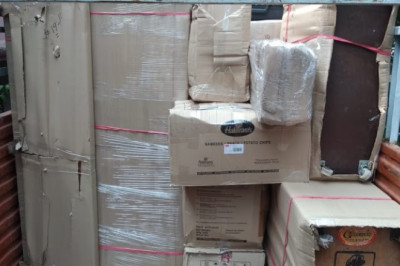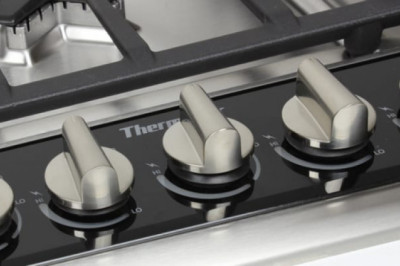views
![Smart Crop Monitoring Market 2027 by Application [BIS Research]](https://fortunetelleroracle.com/upload/media/posts/2022-09/01/smart-crop-monitoring-market-2027-by-application-bis-research_1662035308-b.jpg)
Smart crop monitoring has emerged as a highly beneficial technology catering to diverse farming applications such as detecting soil quality, climatic conditions, and crop requirements.
The effect of smart crop monitoring deployment has ranged from pest control, crop protection, weeding, and several other farming applications in local farms to large scales such as the remote sensing survey of grassland, forests, and agriculture at a global level.
The detailed study is a compilation of 139 market data tables and 30 figures spread through 244 pages and an in-depth TOC on "Smart Crop Monitoring Market – Analysis and Forecast, 2022-2027."
The need for farm operation optimization has also increased over the past decade since 2010. Smart crop monitoring can support distinguishing crops impacted by conditions that are excessively dry or wet, impacted by pests, weeds, fungal infestations, or climate-related harm.
Government and regulatory bodies are playing a substantial part in developing the smart crop monitoring market.
Demand - Drivers and Limitations
Following are the demand drivers for the smart crop monitoring market:
- Need to reduce crop losses
- Higher yields as compared to conventional farming
- Government support and initiatives for smart crop monitoring equipment
The market is expected to face some limitations as well due to the following challenges:
- Cyber and online data security
- Lack of connectivity and technical awareness
- High set-up costs
Reasons to Buy this Report
This exclusive report on the smart crop monitoring market will help in the following ways:
· Extensive competitive benchmarking of the top 20 players (including sensing and imagery, automation and robotics, variable rate application technology, and
- guidance technology has been done to offer a holistic view of the global smart crop monitoring market landscape
- Market ranking analysis based on product portfolio, recent developments, and regional spread
- Investment landscape, including product adoption scenario, funding, and patent analysis
Analyst's Take on the Market:
According to Rakhi Tanwar, Principal Analyst, BIS Research, "The smart crop monitoring equipment is expected to be a great replacement of conventional agricultural equipment and devices. Through a better adoption of these technology-based products and services, the consumers' demand for quality crops and less wastage of resources can be met."
View the report on Global Smart Crop Monitoring Market
Key Companies Operating in the Market and Competitive Landscape
The companies profiled in the study have been selected based on inputs gathered from primary experts and analysis of the companies' product portfolios, key developments, and market penetration.
The top players leading the market include companies in the variable-rate technology (VRT) and automation and robotics segments, which capture around 52% of the presence in the market. Players in other technologies, such as sensing and imagery and guidance technology, account for approximately 48% of the presence in the market as of 2021.
Who should buy this report?
The companies which are manufacturing smart crop monitoring equipment and systems
- Agricultural original equipment manufacturers (OEMs)
- Farm operators
- Agronomists
- Research institutions
- Regulatory bodies
Request a Sample of this Report
Key Questions Answered in the Report:
- What is the estimated global smart crop monitoring market size in terms of revenue for the forecast period 2022-2027, and what is the expected compound annual growth rate (CAGR) during the forecast period 2022-2027?
- What are the key trends, market drivers, and opportunities in the market pertaining to smart crop monitoring?
- What are the major restraints inhibiting the growth of the global smart crop monitoring market?
- What kinds of new strategies are being adopted by the existing market players to expand their market position in the industry?
- What is the competitive strength of the key players in the smart crop monitoring market based on an analysis of their recent developments, product offerings, and regional presence?
- How is the competitive benchmarking of the key smart crop monitoring companies in the agriculture market based on the analysis of their market coverage and market potential?
- Which type of players and stakeholders are operating in the market ecosystem of smart crop monitoring, and what is their significance in the global market?
- Which are the leading consortiums and associations in the global smart crop monitoring market, and what are their roles in the market?
- How does the regulatory landscape differ in different regions for smart crop monitoring?
- How are emerging technologies such as artificial intelligence (AI), 5G communication, and the Internet of Things (IoT) driving the growth of the smart crop monitoring market?
- Which are the major patents filled in the space?
- How is the role of government regarding environmental issues and safety changing the landscape of the smart crop monitoring industry?
- Which smart crop monitoring technology is expected to be leading the smart crop monitoring market by 2027?
- What has been the impact of COVID-19 on the smart crop monitoring market?
Key Market Players and Competition Synopsis
The companies that are profiled have been selected based on inputs gathered from primary experts and analyzing company coverage, product portfolio, and market penetration.
The top segment players leading the market include variable-rate technology (VRT) and automation and robotics, which capture around 52% of the presence in the market. Players in other technologies, such as sensing and imagery and guidance technology, account for approximately 48% of the presence in the market, as of 2021.












